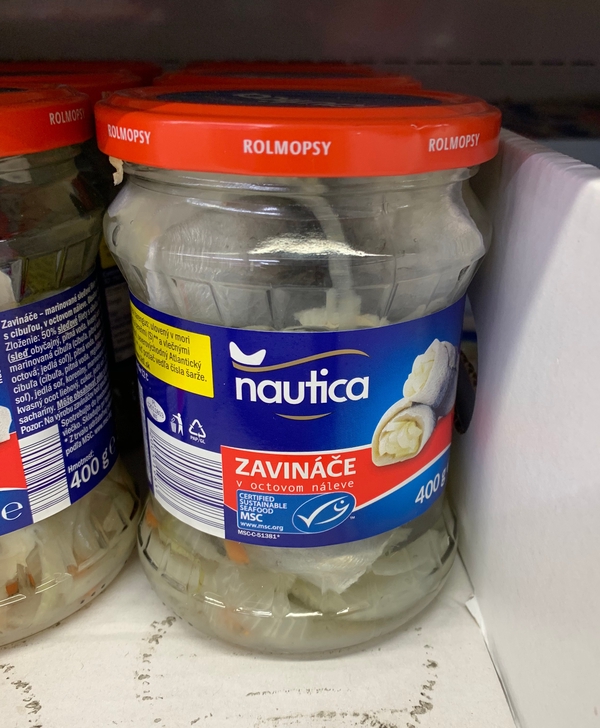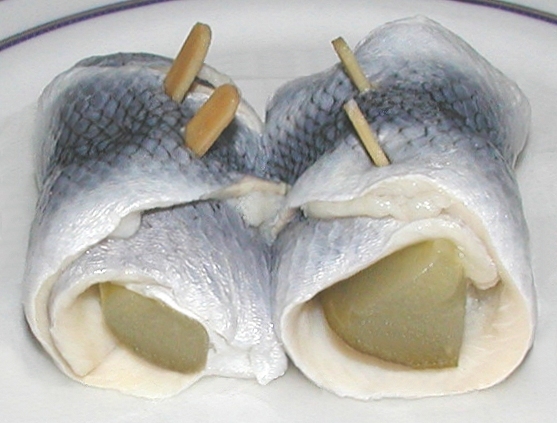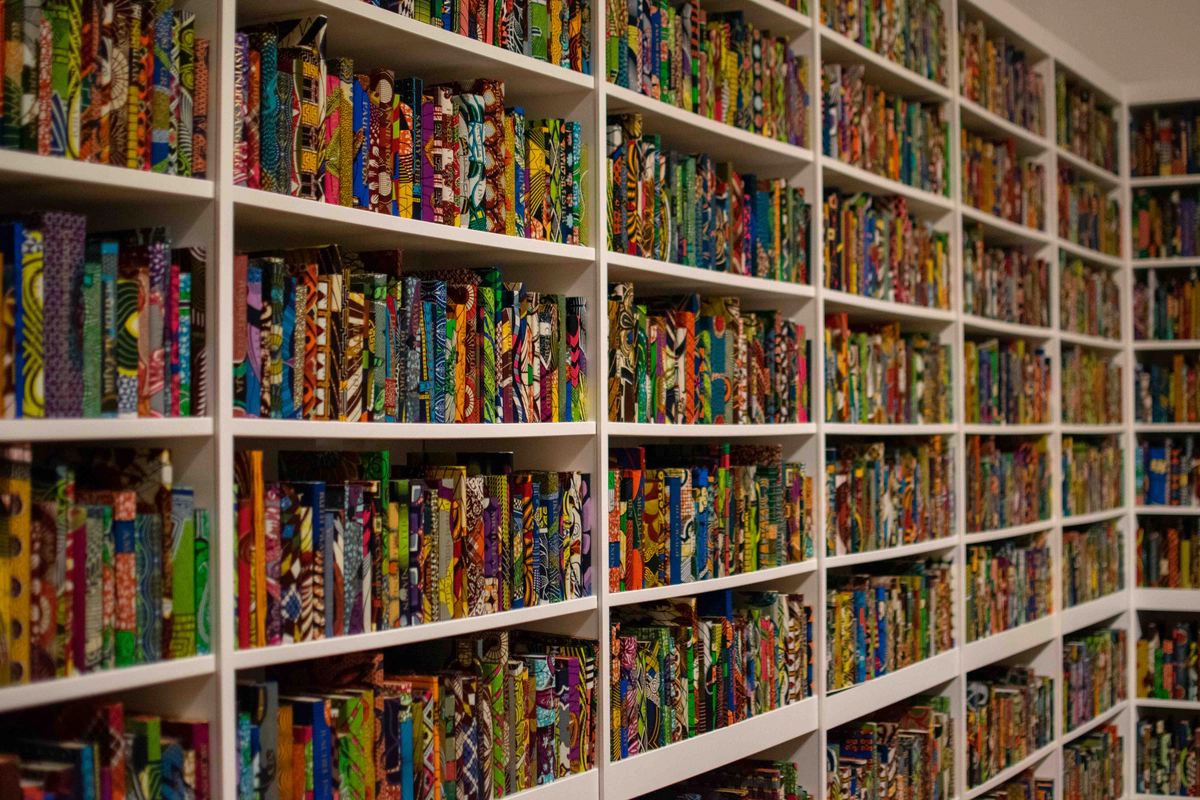Almost exactly one year ago, I was in Bratislava learning the Slovak language. Among the bits and pieces of cultural trivia I picked up during my time in Slovakia, one of my favorite is that the Slovak word for “@” – i.e. the “at symbol” – is zavináč.
Zavináč is a rolled pickled herring dish which, if you squint, resembles the @ symbol – hence the name. Though I’d never heard of it, this same dish is called rollmop in English, which is decidedly unappetizing. In the grocery store, they look like this:

And when you go to eat one, it looks like this:

Clever, right? The @ symbol seems to be, as far as I can tell, uniquely varied in the names it has in different languages, possibly due to its rather recent addition to the common character set (it only began to be included on typewriters in 1900).
When I was doing a bit of research to verify this fact, I noticed that Wikipedia has a list of the @ symbol’s name in other languages. Here are a few that stand out:
- In Afrikaans, it is called aapstert, meaning ‘monkey tail’.
- In Bosnian, it is ludo a (‘crazy A’).
- In Swedish, it is called snabel-a (’elephant’s trunk A’)
- In Greek, it is called παπάκι meaning ‘duckling’.
- In Catalan, it is called arrova (a unit of measure) or ensaïmada (a Mallorcan pastry, because of the similar shape of this food).
It seems like most of the names for @ are derived from: a similar looking food, a similar looking animal, or a variation of “strange looking A”. There are also many languages that have simply adopted English’s name for it, “at”, using their own phonetic rules.
This made me curious as to if other typographic symbols have similarly varied names. I didn’t find any others that were as varied as @ (on Wikipedia, at least), though I did learn a few new typographical terms. For example, an asterism – usually stylized as “⁂” – is a symbol used to indicate breaks in text. An asterism is a type of dinkus, which is the generic term for a symbol used to divide text. Asterisms fall under the larger set of typographical symbols known as dingbats, used in ornamental typesetting. For example, emojis are dingbats, as are many fun unicode characters like ✄, ❀, and ➿. I’m sure everyone has spent some time playing with the Webdings font, which Wikipedia helpfully defines as a “TrueType dingbat typeface”. Oh, and while we’re at it, don’t forget the humble fleuron, which is a category of dingbat consisting of horticultural symbols, such as ❦.
(And no, despite the fact that the preceding paragraph reads like one of those logic puzzles full of nonsense words, I’m not making this up.)
Phew. Ok, so back to names of things. This typographic etymology rabbit hole reminded me of a Twitter thread I posted a few weeks back, where I’d discovered a Wikipedia list of foods named after places. Examples:
- Currants (city of Corinth)
- Scallion & Shallot (derived from the city of Ashkelon)
- Peaches
- Sardines (island of Sardinia)
- Gorgonzola, Asiago, Parmesan, Gouda (all town names)
- Jalapeños, Habaneros
- Cantaloupe
- Tangerine (Tangier, Morocco)
This, in turn, led to a list of foods named after people, for example:
- Boysenberry (Rudolf Boysen)
- Carpaccio (Vittore Carpaccio)
- Clementines (Père Clément Rodier)
- Graham crackers (Sylvester Graham)
- Granny Smith Apples (Marie Ana Smith)
- Margarita (Margarita Samas)
- Pizza Margherita (Queen Margherita of Savoy)
- Nachos (Ignacio “Nacho” Anaya)
- Pavlova (Anna Pavlova)
- Praline (Count du Plessis-Praslin)
- Sachertorte (Franz Sacher)
- Tootsie Rolls (Clara “Tootsie” Hirshfield)
And finally, a list of words derived from toponyms. (A toponym is the name of a place; toponymy is the study of the naming of places)
- Bedlam (hospital in London)
- canary (after the islands)
- duffel (town in Belgium)
- geyser (geyser in Iceland)
- Rubicon (river in northern Italy)
- Skid Row (Skid Road in Seattle)
- Spa (town in Belgium)
- volcano (Italian Island)
Needless to say, I’m barely scratching the surface of onomastics (the study of the origin and usage of the names of things). Though, as the joke goes, “There are only two hard things in Computer Science: cache invalidation and naming things”1, so I’m in good company.
To really fall down the rabbit hole, I suggest looking at the wonderful Lists of etymologies, where you can find such gems as List of computer term etymologies, List of state and territory name etymologies of the United States, and List of scientific laws named after people2.
Anyways, that’s probably enough Wikipedia for tonight.
-
Though, if you read about scientific discoveries named after people, you should know about Stigler’s law of eponymy, which states that “no scientific discovery is named after its original discoverer.” See also List of misnamed theorems and, because of course this exists, List of examples of Stigler’s law. ↩︎
